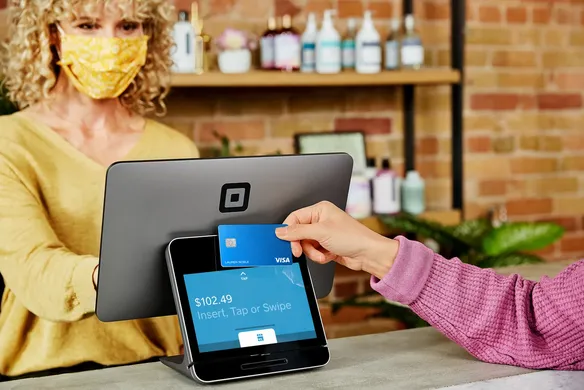Table of contents
The cash register and point of sale (POS) systems are the heart of retail, restaurant, beauty businesses and more. Both devices let you process hundreds of transactions a day. Cash registers are generally less expensive and offer more basic functionality, whereas POS systems cost more but integrate more comprehensively with your back-office operations.
Is a cash register or POS system the best choice for your business? This will depend on your business style and size, the number of transactions you process, whether you’d like advanced functionality, and your budget.
Read on for more information about the features and benefits of cash registers and point of sale (POS) systems.
What is a cash register?
A cash register – also known as a “till” – is a cash management device commonly used in retail and other businesses. It’s used to calculate and record sales and transactions electronically.
A cash register creates a record of the money flowing into and out of a business. It can also calculate and add taxes and generate receipts. A cash register usually includes a keypad or touchscreen, receipt printer and a drawer for storing cash.
The cash register was invented in 1879 by James Ritty to keep his employees from stealing money from the till. The initial model was called “Ritty’s Incorruptible Cashier”!
Cash registers have come a long way since. Today’s models are electronic, though increasingly, retailers are opting to use a point of sale (POS) system rather than a basic cash register.
What is a point of sale (POS) system?
A POS or point of sale system is far more than just a cash register. A point of sale system streamlines, automates and simplifies the everyday of running a retail business using a combination of modern software and hardware.
A quality retail POS system makes it easy to calculate and record sales, but it also helps you operate more efficiently when it comes to inventory, staffing, customer management and more.
- Better inventory management: POS solutions like Square for Retail let you manage unlimited items and product categories, view stock levels and print barcode labels. You can even set up email notifications to alert you when stock levels of a particular SKU are running low.
- Better employee management: POS systems offer handy team management tools, including timecard reporting, break tracking and system access management.
- Better customer management: Customer data is invaluable. A good POS system will automatically create customer profiles and let you view customers’ sales histories. With Square Loyalty, you can sort customers into groups and create loyalty programs to reward regular shoppers.
- Flexibility and scalability: Today’s point of sale systems offer integration with a raft of software and hardware solutions. You can connect your POS to your accounting software, or add a barcode scanner or receipt printer.
Square Register is a fully integrated point of sale system that lets you manage card and contactless payments, online sales and pickup and delivery, all from one POS. Find out more on the Square website.
Tips for training your staff to use a cash register
Today’s cash registers and POS systems are generally intuitive and easy to use. Nonetheless, you should provide your new starters with training in both customer service and how to use your business’s solution.
- Have new starters shadow your best cashier. Ask your best cashier to show new team members how to use your cash register and allow them to shadow that person before they work independently.
- Schedule first shifts during off-peak periods. Get new starters to do their first couple of shifts at quieter times. They’ll have more time to process transactions and ask questions without feeling rushed.
- Show all employees how to load the receipt roll. If you use paper receipts, casual employees can go a long time without needing to change the receipt roll. Ensure that all workers know how to load a new receipt roll and practice regularly so they don’t fumble in front of customers.
- Give staff a cheat sheet of product codes to memorise. If your store sells products that aren’t barcoded, your team may need to enter product codes or pricing manually. Give each employee a laminated sheet with common product codes that they can take home and learn.
- Ensure you provide training on returns and exchanges. Everyone should know how to process less frequent transaction types like returns and exchanges. Make this part of your onboarding training and practice with your team regularly.
- Teach employees how to spot counterfeit currency. Teach your people to check for counterfeit money discreetly.
We share more tips for training your staff to use your cash register or POS system on our blog, ‘27 cash register training tips all effective businesses know’.
![]()











